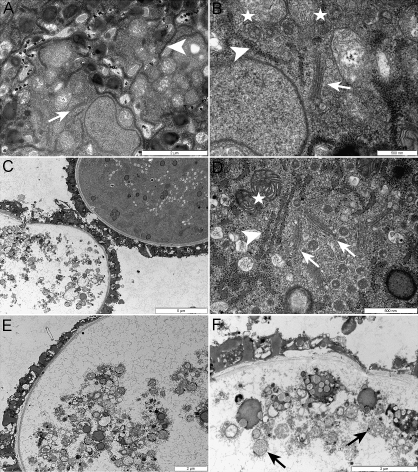Fig. 5.
Pollen from atsec24a-1(+/m) plants has a heterogeneous appearance at an ultrastructural level. (A, B) Transmission electron micrograph of newly dehiscent wild-type anthers in which organelles are clearly visible (arrow, Golgi; arrowhead, ER, stars, mitochondria). Scale bars: 2 μm (A), 500 nm (B). (C–F) Analysis of pollen from newly dehiscent anthers of atsec24a-1 plants shows two types of grain. Although the pollen wall appears uniform among the grains, half of the pollen is similar to the wild type while the other half is more translucent (C). In the pollen grains that appear similar to the wild type, organelles such as the Golgi (arrows), ER (arrowhead), and mitochondria (star) are clearly visible (D). The content of the translucent pollen grains (E) is characterized by the presence of blebbing structures, including mitochondria (arrows) and other structures of unknown nature (F). Scale bars: 5 μm (C), 500 nm (D), 2 μm (E, F).

